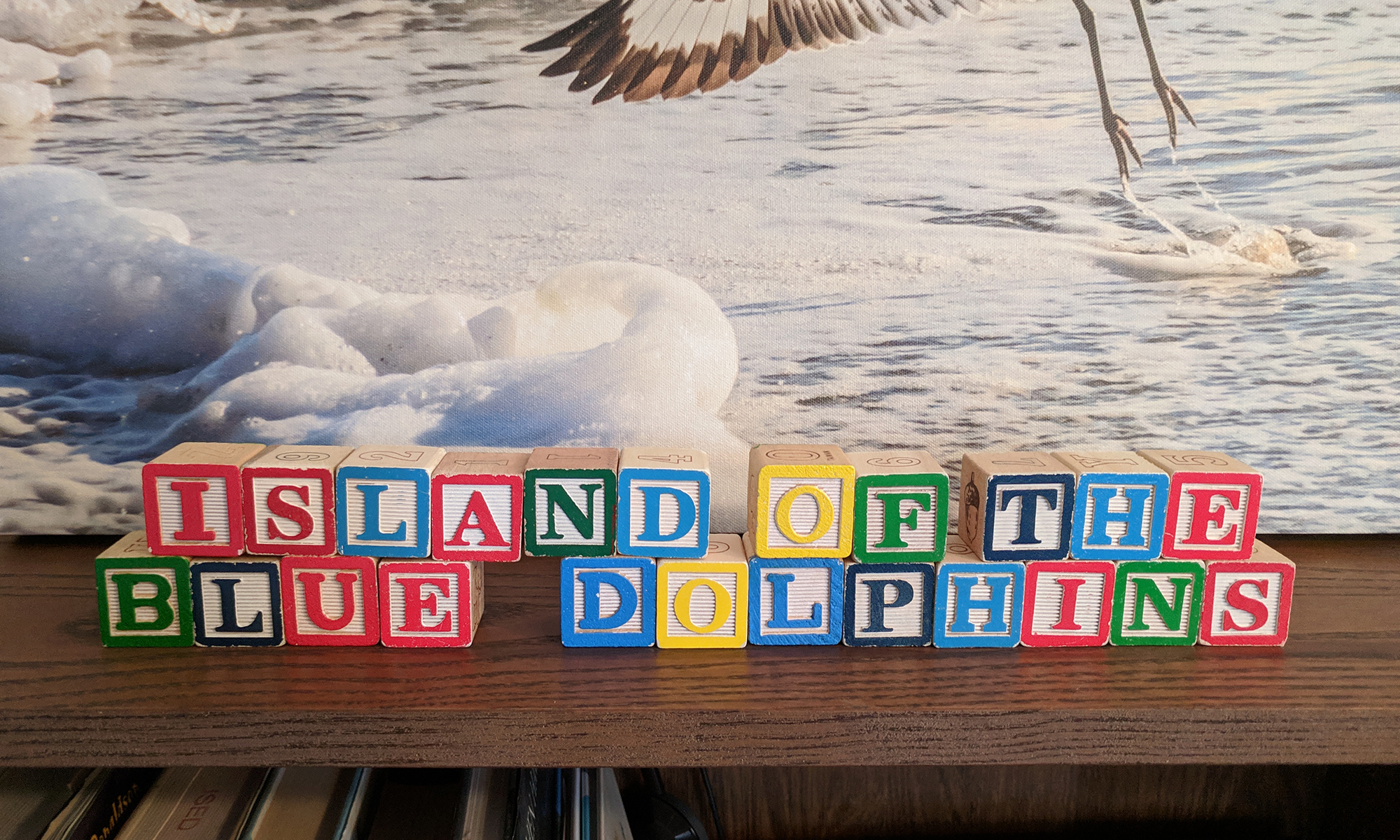This is the first of two episodes about the Newbery Award winning novel Island of the Blue Dolphins by Scott O’Dell. This book is a work of speculative historical fiction that imagines what the life of the Lone Woman of San Nicolas might have been like. It is not and never could have been a work that reported history accurately, because the history can never truly be known. But O’Dell did his best to research what he could, and his novel ignited interest in researching the life of the Lone Woman that still burns bright today. Because of Island of the Blue Dolphins, not only is the Lone Woman not forgotten, but she and her lost culture have be the subjects of some of the best historical and archaeological research in the world.
This episode summarizes the most accurate information currently available about the life of the Lone Woman. Whenever Island of the Blue Dolphins is taught, kids want to know how much of the story is real. There are a lot of scraps of information you can find online, and very little of it is accurate. We now know that the stories recorded in the nineteenth century ranged from mostly true to flat out fabrications by people who never even met the Lone Woman of San Nicolas. Parents and teachers can use this episode to help them feel confident about answering kids’ questions about what we do and don’t know about the Lone Woman, or Karana as she’s called in the novel. The next episode will focus on the fictional story in Island of the Blue Dolphins.
Reliable Sources for learning about the true history of the woman that inspired Island of the Blue Dolphins
Channel Islands National Park guide to Island of the Blue Dolphins
Channel Islands National Park YouTube Channel
Islapedia
Articles written by the following people about San Nicolas Island and the Lost Woman of San Nicolas are very reliable:
-
- John R. Johnson, an anthropologist with expertise on the languages and cultures of coastal and island tribes of Southern California
- Susan L. Morris, a researcher who examines original documents such as maps, letters, shipping documents, company records, and newspapers to re-create an accurate timeline for the period of the Lone Woman’s life.
- Steven J. Schwartz an archaeologist who worked for the US Navy doing excavations on San Nicolas island
- René L. Vellanoweth, an anthropologist at California State University who has also led expeditions to sites on San Nicolas island
- Carol Peterson, the education coordinator for Channel Islands National Park
Activity: What is a Reliable Source?
Talk with students about the definition of the word reliable: “consistently good in quality or performance; able to be trusted.” When doing research for school work, students should only use sources that are reliable.
Reliable sources:
-
- Are written by someone who is an expert about the topic
- Have information that is accurate and up to date
- Do not express opinions without strong evidence behind them
- Do not try to persuade the reader to agree
- Are published by well-respected groups or people who have a good record of sharing accurate information
On a piece of paper or whiteboard, make two columns, one titled “reliable” and the other “unreliable.” Ask students to suggest sources of information that are reliable. They should come up with ideas like museums, scientists, researchers, teachers, librarians, experts, academic books, and so on. Ask students to also suggest sources which are unreliable sources of facts. They should list things like articles without an author, gossip, rumors, advertisements, political arguments, old and out of date documents, or sources which promote a belief at the expense of facts. Discuss how students can recognize the difference between reliable and unreliable sources.

